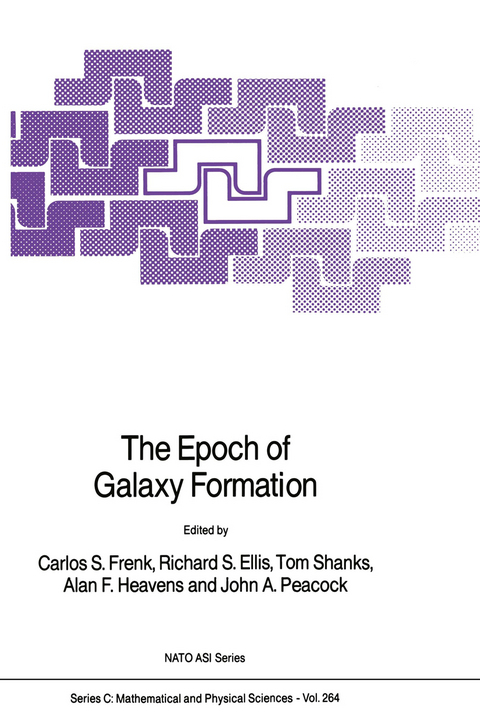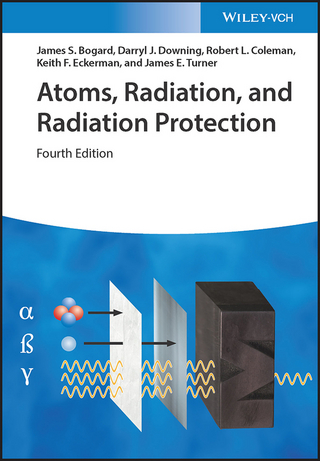
The Epoch of Galaxy Formation
Springer (Verlag)
978-94-010-6902-1 (ISBN)
Scientists in the late twentieth century are not the first to view galaxy formation as a phenomenon worthy of explanation in terms of the known laws of physics. Already in 1754 Kant regarded the problem as essentially solved. In his Univerlal Natural Hutory and Theory 0/ the H eaven$ he wrote; "If in the immesurable space in which all the suns of the Milky Way have formed themselves, we assume a point around which, through some cause or other, the first formation of nature out of chaoo began, there the largest mass and a body of extraordinary attraction will have arisen which has thereby become capable of compelling all the systems in the process of being formed within an enormous sphere around it, to fall towards itself as their centre, and to build up a system around it on the great scale . . . . Observation puts this conjecture almost beyond doubt. " More than 200 years later, a similar note of confidence was voiced by Zel'dovicb at an IAU symposium held in Tallin in 1911; "Extrapolating . . . to the next symposium somewhere in the early eighties one can be pretty sure that the question of the formation of galaxies and clusters will be solved in the next few years. " Perhaps few astronomers today would share Kant's near certainty or feel that Zel'dovich's prophecy has been fulfilled, Many, however, will sympathize with the optimistic olltlook of these two statements.
I. Forming Galaxies.- Galaxy formation: high redshift or low?.- Observable signatures of young galaxies.- A multicolor search for forming galaxies.- Lyman-alpha galaxies in 1988.- Morphological evolution of radio galaxies.- High redshift radio galaxies and galaxy formation.- Deep surveys of field and low-flux-radio galaxies.- Constraints on the epoch of galaxy formation from deep U-band counts.- II. Gas Clouds.- Lyman line absorption systems.- Damped Lyman alpha absorbers: the progenitors of galactic disks.- A chemically young galaxy at z=2.3.- Lyman ? emission from a possible primeval galaxy at z=2.5.- III. Quasars.- The quasar redshift cut-off.- Fifty-three multicolour selected quasars with redshifts greater than three.- The luminosity function and clustering of QSOs.- High redshift quasars in the cold dark matter cosmology.- The intergalactic medium and the epoch of galaxy formation.- A cooling flow around the quasar 3C196.- IV. Evolution of Galaxies and Clusters.- Galaxy evolution in high density environments.- Evolution of compact groups and formation of elliptical.- Properties of galaxy clusters associated with quasars.- History of star formation in normal galaxies.- Recurrent star formation in elliptical galaxies.- V. Background Radiation.- Constraints on galaxy formation from cosmic background radiations.- Explaining the Nagoya-Berkeley submillimetre background.- Star formation and the x-ray background.- VI. Models.- Galaxy formation and biased clustering.- Galaxy clusters and the epoch of galaxy formation.- Exploring origins for the Hubble sequence.- Galaxy mergers in a CDM model.- Clustering and dynamics in a dissipative CDM N-body simulation.- The galaxy luminosity function: an alternative to the Press and Schechter technique.- Galactic evolution and globalstar formation.- Galaxy formation and cooling flows.- The epoch of galaxy formation in explosion models.- Recent results on cosmic strings and galaxy formation.- Galaxy formation in unstable dark matter models.- VII. The Age of the Galaxy.- The age of the Galaxy.- The nature and age of the galactic thick disk.- A simple model for the Local Group of Galaxies.- VIII. Prospects.- Future observational prospects.- Poster Papers.- A new deep AAT redshift survey.- On the interpretation of galaxy counts, and color and redshift distributions.- The interpretation of faint galaxy counts.- Limits on dust in damped Lyman-alpha systems and the obscuration of quasars.- The stellar content of early-type galaxies in dense environments.- A new study of absorption line density in QSO’s Ly? forest.- The Edinburgh/Durham southern galaxy catalogue.- Mass-to-light ratios and the age of galaxies.- Emission lines and star formation in radio galaxies.- The age of the radiogalaxy 0902+34 at the redshift z=3.395.- Statistics of radio galaxy populations and galaxy formation.- Simulations of the visual appearance of galaxy clusters at high redshift.- Central galaxy formation by cooling flows.- Constraints on the amplitude of primordial density fluctuations.- Spottiness in the structure of the microwave background radiation.- Energetic constraints on spectral distortions of the microwave background.- CBR polarization by cosmic dust at high redshifts.- Growth of perturbations in a collapsing protogalaxy.- The turnaround epoch of clusters of galaxies.- The correlations of peaks in random noise.- Density maxima as sites for galaxy formation.- A cross-correlation method to test the dependence of the clustering of galaxies on luminosity.- Constraints on the formation redshift of bright galaxies inbiased scenarios.- Biased theories with non-v threshold.- Sinking satellites and disk heating of spiral galaxies.- Galaxy formation in asymmetric dark haloes.- Gas in a cosmological N-body simulation.- Dissipational galaxy formation.- Tidal origin of starbursts and active galactic nuclei.- The topology of large scale structure: observations.- Append.- Galaxy formation: the board game.- Author Index.
| Reihe/Serie | NATO Science Series C ; 264 |
|---|---|
| Zusatzinfo | 470 p. |
| Verlagsort | Dordrecht |
| Sprache | englisch |
| Maße | 155 x 235 mm |
| Themenwelt | Naturwissenschaften ► Physik / Astronomie ► Angewandte Physik |
| Naturwissenschaften ► Physik / Astronomie ► Astronomie / Astrophysik | |
| Naturwissenschaften ► Physik / Astronomie ► Relativitätstheorie | |
| Technik ► Luft- / Raumfahrttechnik | |
| ISBN-10 | 94-010-6902-6 / 9401069026 |
| ISBN-13 | 978-94-010-6902-1 / 9789401069021 |
| Zustand | Neuware |
| Haben Sie eine Frage zum Produkt? |
aus dem Bereich


